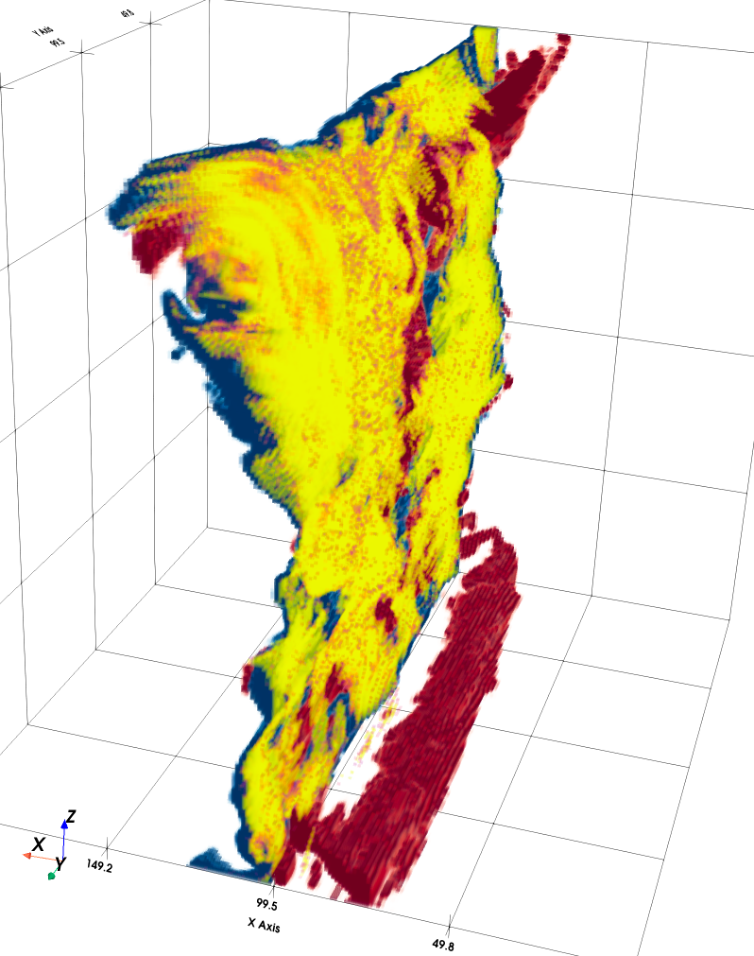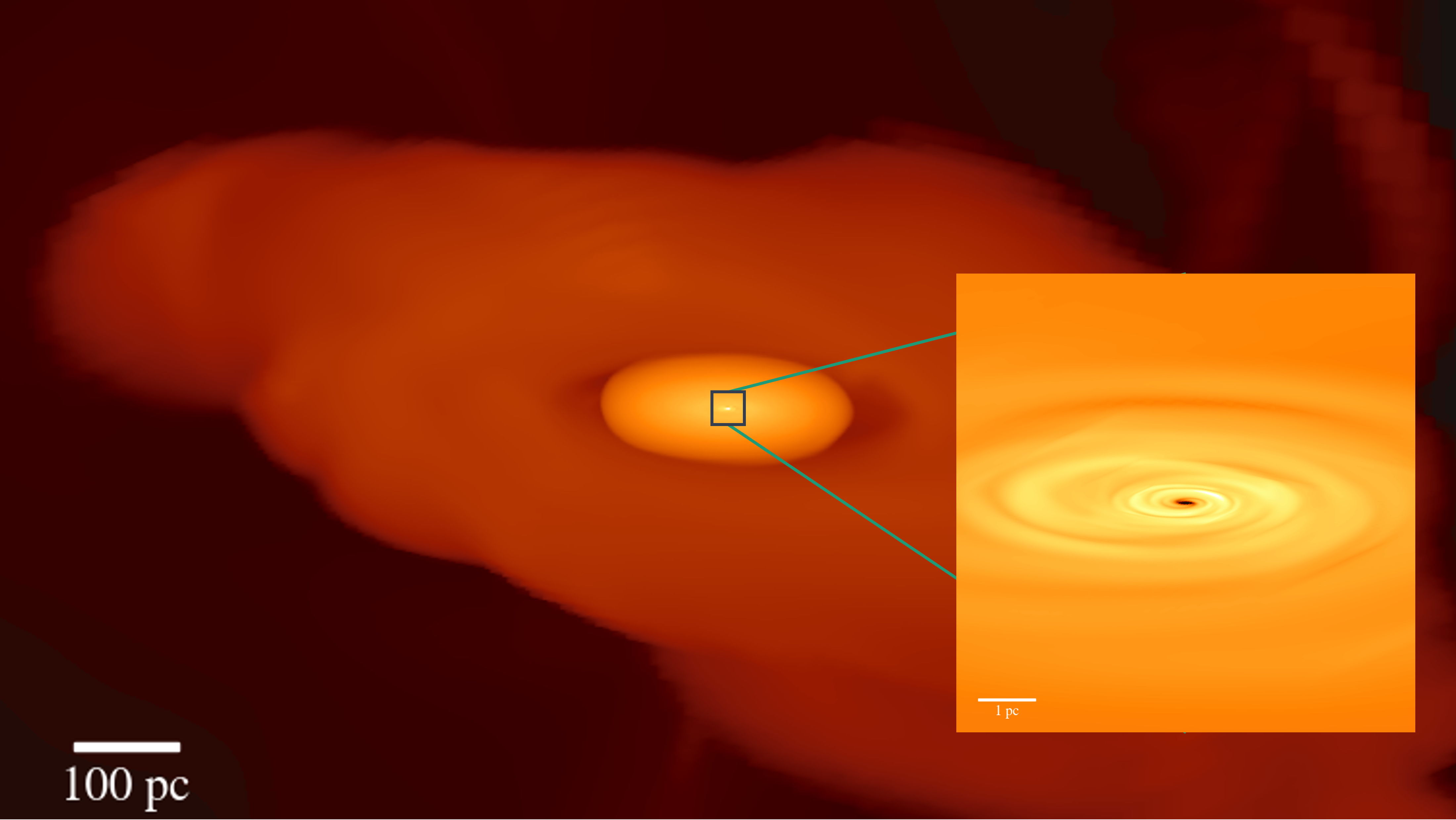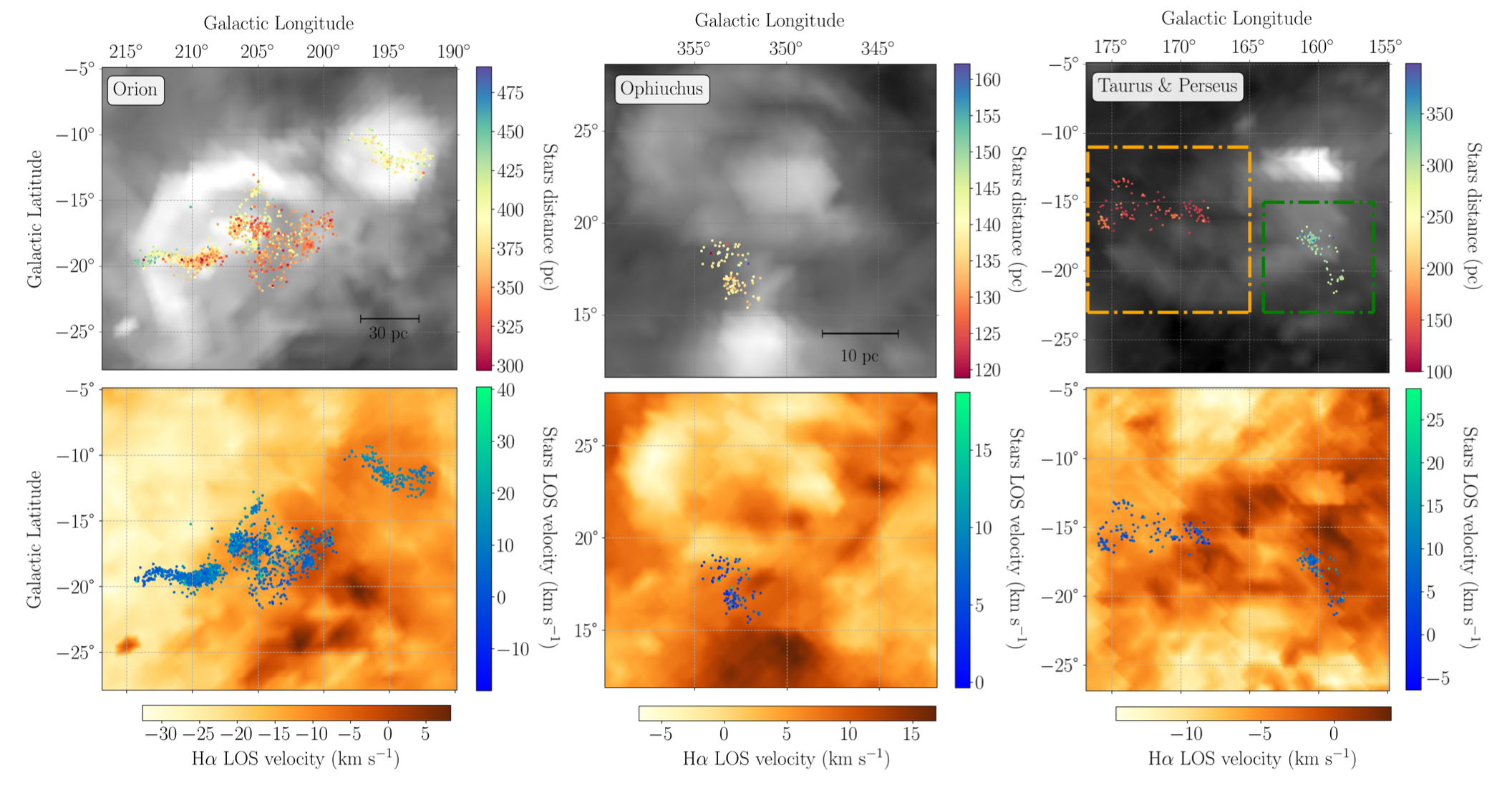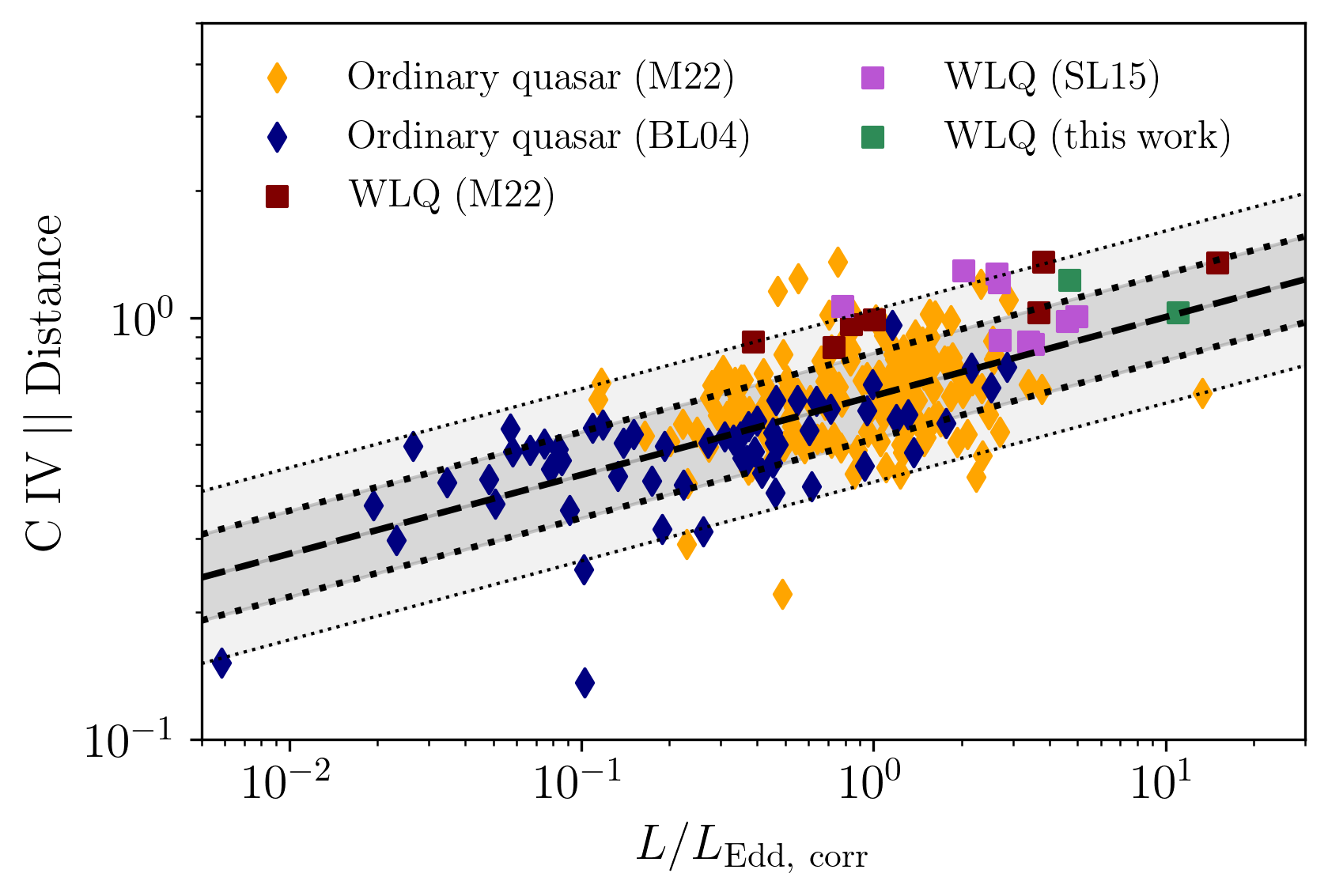I am a fourth-year physics graduate student at the University of North Texas working with Dr. Yuan Li. My Ph.D. thesis focuses on computer simulations of the feeding and feedback cycle from supermassive black holes at the center of massive elliptical galaxies. I was also a Pre-Doctoral Fellow at the Flatiron Institute Center for Computational Astrophysics during Fall 2023, developing machine learning techniques to automatically segment current sheet structures in magnetized plasma turbulence simulations. I have since continued working on this project as a guest researcher. Further details about my past and current research can be found in the Research section.

My research projects in reverse chronological order.
Projects indicated by "(current)" are those I am actively working on.
Click on the images for more details.
Segmentation of Current Sheets in Magnetized Plasma Turbulence with Computer Vision (current)

Magnetohydrodynamical (MHD) turbulence is a ubiquitous phenomenon in the universe. The intermittency of MHD turbulence at the at the dissipation scale causes the formation of current sheets -- two-dimensional sheet-like structures of intense current flows. The magnetic field across these sheets usually experiences a reversal in polarity. Through tearing-mode instability, current sheets can tear, allowing magnetic reconnection, which is important in heating the plasma as well as accelerating particles. As a pre-doctoral fellow at the Center for Computational Astrophysics (CCA), I am working with my mentors to develop a machine learning algorithm to automatically segment and track current sheets in 3D plasma simulations. We call our algorithm aweSOM. We find that in many test cases, the algorithm can effectively segment the current sheets from simulations, and we are actively working on refining the technique for public release.
Advisors: Joonas Nättilä, Jordy Davelaar, and Lorenzo Sironi (CCA / Columbia University)
Meso-scale Simulations of Multiphase Accretion Flows onto Supermassive Black Holes (current)

Current state-of-the-art numerical simulations of supermassive black holes at the center of galaxies
are largely successful at recreating the accretion flows observed via telescopes, especially on the
galaxy-scale (~0.1 to hundreds of kpc) and the event-horizon-scale (~10^-2 pc). However, our
current theoretical understanding of the accretion flow between the Bondi radius and the outer edge of the
accretion disk (the meso-scale) lags behind observations. My Ph.D. thesis aims to provide theoretical
explanations for the observed meso-scale accretion flows. To this end, I am designing galaxy-scale MHD
simulations of the accretion flow and relativistic jet feedback motivated by
observations of the elliptical galaxy M87 using the adaptive mesh-refinement code Athena++. Then,
through a
recently developed nested zoom-in technique, I plan to construct meso-scale simulations of the same system to
provide boundary and initial conditions at the horizon-scale for future GRMHD simulations
of the accretion disk.
Advisor: Yuan Li (UNT)
Measuring Turbulence in the Interstellar Medium with Young Stars (current)

Stars are born out of the turbulent molecular gas of the interstellar medium. Once formed, they decouple
from the surrounding gas, but still retain their pre-natal kinematics. Using Gaia astrometric
measurements in conjunction with APOGEE-2, we calculate the velocity structure function of stars in four nearby
star-forming regions and compare them to the structure functions found in Hα and CO gas.
In our 2022 paper, we found that the structure functions of the four
star-forming regions in the Solar neighborhood shows a universal scaling of turbulence when traced by young
stars. We also found evidence of local supernova energy injection in Orion and Ophiuchus, which is supported
by observational studies.
This work is a follow-up to our 2021 paper, which investigates young stars in the Orion Complex
specifically.
Read our
press release here. Watch our interview for the American Astronomical
Society's Journal Author Series here.
Advisor: Yuan Li (UNT)
Weak Emission-Line Quasars (WLQs) in the Context of C Ⅳ Emission-line Properties

WLQs are a peculiar subset of luminous active galactic nuclei whose emission spectra show extremely weak
emission line profiles of Lyα+N Ⅴ λ1240 and/or C Ⅳ λ1549. Much effort has been
invested to explain the weakness in emission profiles of these quasars over the last two decades. My current
project proposes a new way of looking at WLQs not as a disjoint subset of quasars but rather as quasars that
lie preferentially towards the extreme end of the C Ⅳ || Distance parameter space. This work has been accepted for
publication in ApJ and is currently in the final proof stage.
Advisor: Ohad Shemmer (UNT)
Similarity Mapping of the Milky Way Using Neural Style Transfer

As a graduate student advisor, I helped M.S. students in the A.I. summer program at UNT apply the
pre-trained
VGG-19 deep neural network architecture to the Milky Way map from the Wisconsin
H-Alpha Mapper survey. Using the Orion Molecular Cloud Complex as a reference image, neural style
transfer was able to identify various star-forming regions in the Milky Way. This result shows neural style
transfer's promise as a quick targets identification pipeline for future sky surveys.
Read our project
summary poster here.
Advisors: Mark Albert and Yuan Li (UNT)
Generating Initial Data for Binary Neutron Stars Merger Simulations
I worked as an undergraduate research student at the Rochester Institute of Technology's Center for Computational
Relativity and Gravitation from 2018 to 2020. There, I modified and documented the LORENE initial data code
to generate physically motivated binary neutron stars pre-merger. Furthermore, I performed several GRMHD
simulations of binary neutron stars merger using the Einstein Toolkit, and reported our findings at the 2019
Midwest Relativity Meeting in Grand Rapids, Michigan.
Read our conference presentation here.
Watch one of my
simulations here.
Advisors: Joshua Faber (RIT) and Eric
Blackman (UofR)